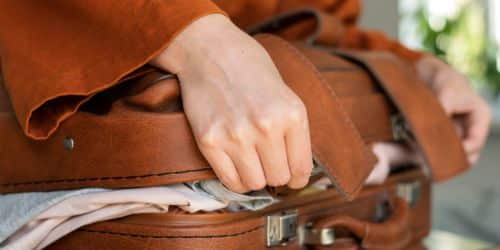Moving to a new location, especially when it involves a long distance move, can be an exciting but challenging experience. One of the crucial aspects of a successful long distance move is the safe and secure transportation of your belongings. This is where the expertise of a professional long distance moving company comes into play.
With their knowledge and experience, a reputable moving company can ensure that your belongings are packed and protected with utmost care, giving you peace of mind throughout the journey.
When you enlist the services of a professional long distance moving company, you gain access to a team of experts who understand the intricacies of long distance moves. They have extensive experience in handling various types of belongings and are equipped with the necessary packing materials to ensure proper protection.
These long distance moving companies have efficient packing strategies and techniques that can save you time and effort. From disassembling furniture and wrapping it in protective materials to packing fragile items with precision, they know how to safeguard your possessions during transit.
1. Planning the Packing Process
To start the packing process efficiently, it’s crucial to create a timeline that outlines specific tasks to be completed before the moving day. Begin by gathering all the necessary packing supplies, including sturdy boxes, bubble wrap, packing paper, packing tape, markers, and labels. Having these items ready will save you time and help you stay organized.
To avoid packing unnecessary items and increase efficiency, sort and declutter your belongings. This process will not only reduce the number of items you need to pack but also help you start fresh in your new space.
2. Organizing Belongings
Categorizing your belongings is an effective way to streamline the packing process. Group similar items together, such as kitchenware, clothing, electronics, and books. This labeling system will make unpacking much easier when you reach your new destination. Creating an inventory list is another useful step. Note down all the items you are packing, especially valuable or fragile possessions.
3. Packing Strategies
When it comes to packing fragile items, taking extra care is essential. Wrap delicate items individually in packing paper or bubble wrap to prevent them from colliding with each other. Use sturdy boxes and secure them with packing tape. Fill any empty spaces in the boxes with packing peanuts or crumpled paper to provide cushioning and minimize movement during transit.
To maximize space in boxes and prevent damage, utilize efficient packing techniques. Start with heavier items at the bottom and place lighter items on top. Disassemble large items whenever possible to save space. Utilize the nooks and crannies by tucking small items into gaps. However, be mindful of not over packing boxes, as it can lead to breakage or the box becoming too heavy to handle.
4. Protecting Furniture and Large Items
Furniture and large items require special attention during a move. Disassemble furniture, such as beds and tables, following the manufacturer’s instructions. Keep small parts, like screws and bolts, in labeled bags and tape them securely to the corresponding furniture piece. To protect furniture from scratches and damage, wrap them in furniture blankets or moving pads. Secure the blankets with packing tape or plastic wrap to keep them in place. Additionally, consider using corner protectors to safeguard vulnerable edges.
5. Securing Electronics and Valuables
Electronics and valuables are often expensive and fragile, making them susceptible to damage during a move. Before packing electronics, back up important data and disconnect any cables. Place each electronic device in its original packaging if available.
Otherwise, wrap them in anti-static bubble wrap or soft blankets. Valuables like jewelry, important documents, and sentimental items should be kept with you during the move. Pack them in a separate bag or box and ensure they are well-protected and easily accessible.
6. Properly Sealing and Closing Boxes
Properly sealing and closing boxes is crucial to prevent damage during the move. Use sturdy boxes suitable for the weight and fragility of the items they will contain. Reinforce the bottom of each box with an extra layer of packing tape for added strength. When closing boxes, follow proper closure techniques. Fold the flaps inward and secure them with packing tape in an “H” pattern. This method provides extra stability and prevents the flaps from coming undone during transit.
7. Loading and Unloading Techniques
Loading and unloading heavy boxes and furniture require careful planning and proper techniques. Consider hiring professional long distance movers or enlisting the help of friends and family members. Use moving equipment such as dollies, furniture sliders, and straps to ease the lifting and transport process. Secure the load using straps or bungee cords to prevent shifting during transit. During unloading, take precautions to prevent injuries by lifting with your legs and using proper lifting techniques.
8. Transportation and Vehicle Considerations
Choosing the right size of moving truck or container is crucial for a long distance move. Evaluate the size of your belongings and rent a truck or container that provides enough space. It’s better to have some extra space than to squeeze everything tightly, risking damage.
During transit, protect your belongings from temperature and humidity changes. Wrap sensitive items in plastic or use moisture-absorbing products to prevent moisture damage. Fragile items should be placed in a secure and stable position to avoid shifting.
9. Unpacking and Settling In
Once you arrive at your new home, prioritize unpacking essential items first, such as bedding, toiletries, and kitchen essentials. Unpack room by room, starting with the most critical areas. This approach allows you to gradually settle in and maintain a sense of order. As you unpack, arrange furniture and belongings in a way that optimizes your new space. Take the opportunity to declutter further and donate or discard items you no longer need. This will help you create a fresh and organized living environment.
10. Conclusion
Packing and protecting your belongings for a long distance move requires careful planning, organization, and the use of proper packing materials. By following the tips and strategies outlined in this article, you can ensure that your possessions are packed securely and arrive safely at your new home.





